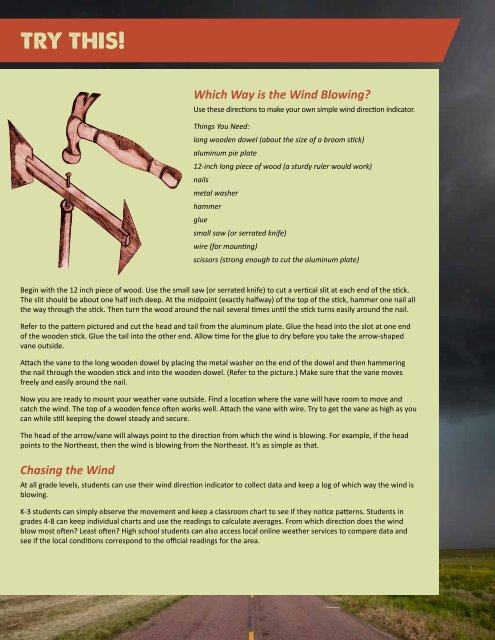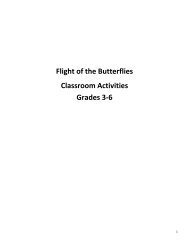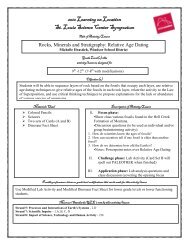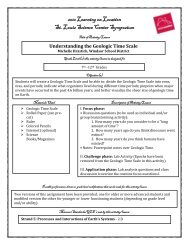Tornado Alley - Big Movie Zone
Tornado Alley - Big Movie Zone
Tornado Alley - Big Movie Zone
You also want an ePaper? Increase the reach of your titles
YUMPU automatically turns print PDFs into web optimized ePapers that Google loves.
Which Way is the Wind Blowing?<br />
Use these directions to make your own simple wind direction indicator.<br />
Things You Need:<br />
long wooden dowel (about the size of a broom stick)<br />
aluminum pie plate<br />
12-inch long piece of wood (a sturdy ruler would work)<br />
nails<br />
metal washer<br />
hammer<br />
glue<br />
small saw (or serrated knife)<br />
wire (for mounting)<br />
scissors (strong enough to cut the aluminum plate)<br />
Begin with the 12 inch piece of wood. Use the small saw (or serrated knife) to cut a vertical slit at each end of the stick.<br />
The slit should be about one half inch deep. At the midpoint (exactly halfway) of the top of the stick, hammer one nail all<br />
the way through the stick. Then turn the wood around the nail several times until the stick turns easily around the nail.<br />
Refer to the pattern pictured and cut the head and tail from the aluminum plate. Glue the head into the slot at one end<br />
of the wooden stick. Glue the tail into the other end. Allow time for the glue to dry before you take the arrow-shaped<br />
vane outside.<br />
Attach the vane to the long wooden dowel by placing the metal washer on the end of the dowel and then hammering<br />
the nail through the wooden stick and into the wooden dowel. (Refer to the picture.) Make sure that the vane moves<br />
freely and easily around the nail.<br />
Now you are ready to mount your weather vane outside. Find a location where the vane will have room to move and<br />
catch the wind. The top of a wooden fence often works well. Attach the vane with wire. Try to get the vane as high as you<br />
can while still keeping the dowel steady and secure.<br />
The head of the arrow/vane will always point to the direction from which the wind is blowing. For example, if the head<br />
points to the Northeast, then the wind is blowing from the Northeast. It’s as simple as that.<br />
Chasing the Wind<br />
At all grade levels, students can use their wind direction indicator to collect data and keep a log of which way the wind is<br />
blowing.<br />
K-3 students can simply observe the movement and keep a classroom chart to see if they notice patterns. Students in<br />
grades 4-8 can keep individual charts and use the readings to calculate averages. From which direction does the wind<br />
blow most often? Least often? High school students can also access local online weather services to compare data and<br />
see if the local conditions correspond to the official readings for the area.













